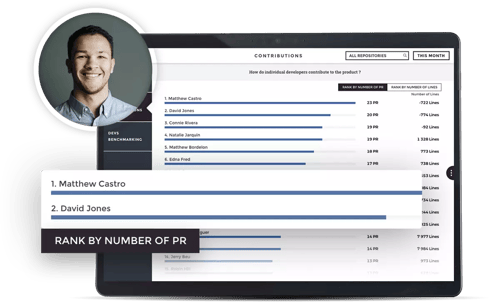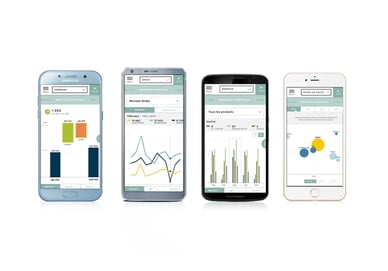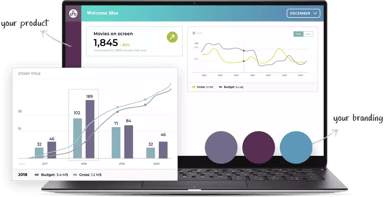Résumer cet article avec :
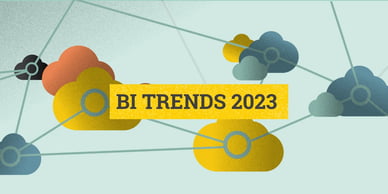
As our third year of COVID-living draws to an end, most organizations, big or small, are navigating uncertain, unpredictable times. They need all the help they can get to face the challenges 2023 might bring. Increasingly, they rely on data to make decisions, from strategic board decisions to day-to-day operations. And increasingly, they’re investing in complex BI solutions without reaping some of the benefits that were advertised to them.
Why? Because they still struggle to access the information they need when it matters the most. As data becomes more vital for every business user, from the C-suite to employees on the field, democratizing data has become the hottest topic in the BI industry. We’ve spotted the following 6 trends for 2023, but it all comes down to this: making data more accessible, for everyone. This is the underlying trend for 2023, and, we think this phenomenon will grip the industry in the years to come.
1. The rise of Customer-facing business analytics
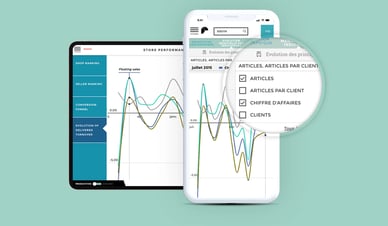
The number one challenge for analytics in 2023? Actively aiding business users in the making of key decisions. The BI industry will navigate away from powerful but “free form” solutions that leave the business user on their own in determining what the data means towards assistance in using their data. Customer-facing analytics is a category of analytics that aims at making it easier for any user to navigate and understand data. Contextless reports that are impossible to understand by an untrained eye will become a thing of the past.
2023 will be the year of “contextualized” data. End users will be less likely to see data without the information that they need to fully understand what’s happening: titles, glossary definitions, and explanations. The most performant BI dashboards on the market will integrate these elements into their UX to build a compelling narrative with their data.
The final goal of customer-facing analytics is to accompany users who are looking at the data and to direct them toward the information they need. The experience of consulting the data will be less like trying to understand a Microsoft Excel sheet with obscure acronyms and KPIs, and more like trying to use a consumer app for the first time (think Instagram or Spotify). We have good reason to hope that by 2023, you’ll never feel lost in front of a report again!
2. One Size Does Not Fit All

The past few years have seen business leaders become more and more disillusioned with their second-generation BI tools. The very same tools to which they’ve allocated hefty budgets, the powerful and complex systems that were presented by their IT teams as the best way to explore and manipulate data. They were promised that these tools were the missing link that would drive their organizations to generate unprecedented profits driven by insights. What happened?
While these tools are perfect for data experts to explore and analyze their company’s data patterns, they’re too complex for non-experts. Even when comprehensive training sessions are provided, the learning curve is too steep. As a result, business users find that, for any but the most simple analysis, they have to go through the data experts to get the figures needed. This complexity deters them from using data to make most of their day-to-day decisions. It crushes the adoption of analytics and after years of using (and paying for) such tools, most companies are still not as data-driven as they would’ve liked.
2023 will be the year when companies begin to realize that “one size does not fit all”: the tools that are ideal for IT and data teams are not the right ones for business users who need guidance to help them access data. In fact, you might need several tools to meet the needs of all your users. Consider these needs:
- Get the data your team needs
- Prepare data by cleansing and blending it
- Visualize data via dashboards
- Distribute data via reports and mobile
- Embed in apps and portals for customers and partners (or anyone)
- Collaborate and take action on insights.
It’s hard to find one tool that does ALL of this and does it well. Generally, an analytics system excels at one of these areas — often the technical aspects of data readiness — and falls short on the others. The data pros that value exploration capabilities are vastly different from the business users who need context and collaboration over all other things. Increasingly, business leaders will invest in custom solutions to meet their particular needs.
3. adoption AS a Growing Focus
What good are analytics if nobody uses them? We bet that in 2023, you’ll hear (or ask) this question at board meetings. And the reason for this is simple: while most organizations are investing heavily in BI and analytics, adoption rates are still strikingly low: around 30% globally. A third of your business accessing analytical insights doesn’t quite qualify a company as “data-driven.”
In order to build a data-driven organization, you need more than a top-notch data team equipped with the most performant analytics tools on the market. You need to make it easier for every single person in your organization to access data. And for the time being, most BI tools are still too complex for non-experts. This problem will drive most businesses to promote analytics at a people scale—to drive widespread adoption across the business.
The challenge for BI tools will be to deliver more user-friendly capabilities so that the 30% adoption rate starts to spike upward. This is not an easy task, and we predict that by 2023, having to go through a reporting team of trained analysts to extract analytical insights will be seen as an unacceptable hurdle for innovative users looking for simpler data.4. The downfall of the citizen data scientist approach
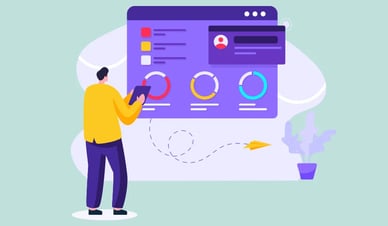
In the past few years, companies have faced an unprecedented challenge. They needed to leverage the wealth of data at their disposal, but their teams didn’t have the required skills to do so. While data can allow them to better understand their customers, markets, and opportunities, only skilled data experts could extract the insights they needed from the data.
As data scientists became increasingly sought after on the job market and the cost of hiring a team of IT or data experts skyrocketed, the model of the “citizen data scientist” formed. Non-experts users could do it themselves— they could simply acquire the skills they lacked to understand and leverage data. Companies invested in training sessions aimed at helping these newly appointed “citizen data scientists” hone their skills. But increasingly, this approach is seen as costly and inefficient.
The learning curve is still too steep for business experts who need to learn about data science—remember that 30% adoption rate. Now the approach is shifting. Instead of business users learning to be data scientists, modern businesses have shifted the approach and are investing in analytics that are:
- Readily understood by the data novice
- Accessible by employees at every level, not just data experts and actuaries
- Versatile
- Available across every device in seconds
We're noticing that these criteria are growing in importance among business users, who spend tens of thousands of dollars on BI tools and teams to manage them. Once more businesses turn their attention toward cost savings that a tool like Toucan provides, they will not hesitate to add data storytelling to their analytical process.
5. Mobile becomes the primary method of BI use
What image comes to mind when you think of BI? If you’re picturing a data analyst sitting in front of their desktop computer, trying to understand obscure spreadsheets, then you might be stuck in 2015. In 2022, BI will be easier to access and understand for everyone, no matter which position they hold, and more importantly, where they are: in the office, at home, in the field, in a restaurant, a store, a hotel, or on their way to a meeting.
The point of BI is to give business users actionable information that they can access whenever and wherever they need it. And what device is always by their side at all times? That’s right, their smartphone. While even the lightest laptops are a bit cumbersome, mobile devices are always with us, ready to use with the flick of the thumb. It’s only logical that BI will increasingly happen on mobile devices, but most BI vendors seem to have yet to understand that their mobile apps are still clunky ports of desktop-first analytic applications.
In 2023, mobile phones will be the battlefield of BI vendors who want to stay relevant. They’ll have to develop mobile-first dashboards that can be deployed easily on any device, without the need to install or configure anything.
6. Embedding analytics becoming a “must-have”
In 2022, SaaS companies, software vendors, and app builders have understood they need that data to set themselves apart from the competition. And we’re not just talking about the data they can use themselves in order to optimize their product and make it more adapted to the needs of their users. We’re focused on providing end-users with detailed, real-time reports of their activity. Basically, instead of viewing data as a tool or just another "thing" on the side, we view it as a service.
The trouble is, most software companies are solely focused on developing their own product: this is what they do best, and what their teams are trained for. Developing and implementing their own reporting solution is just too costly and complicated. They’re increasingly turning to third-party reporting tools they can embed within their own platforms.
Embedding third-party reporting tools into their product as a white label allows them to provide their customers (or the public) with top-grade analytics without any training required. BI companies who understand this will have an evident leg up on the competition, with data insights finally delivering what they promise - a clear assessment of strengths and weaknesses.

Toucan Toco
Voir tous les articles


